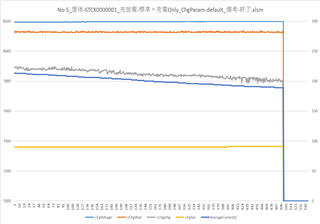Other Parts Discussed in Thread: BQ40Z50
Please tell me about that the SOC sometimes does not reach 100% when being fully charged.
I wrote the details on my attached file.
My question are below.
1. Learning Cycle
I have not performed a learning cycle and the parameters in the Ra Table are still at their default values.
If I write the appropriate parameters, is there a high possibility that the SOC will reach 100% when fully charged from the beginning of use?
2. Charge Termination
I am wondering if there is a mistake in the Charge Termination parameters.
Does the SOC change to 100% When gas gauge detects valid charge terminaltion?
See 『7.3.11 Charging and Charge Termination Indication』 in the datasheet.
3. How to force SOC change to 100%
Is there any way to force Gas Gauge to output SOC=100%?
Question_220607.xlsx


